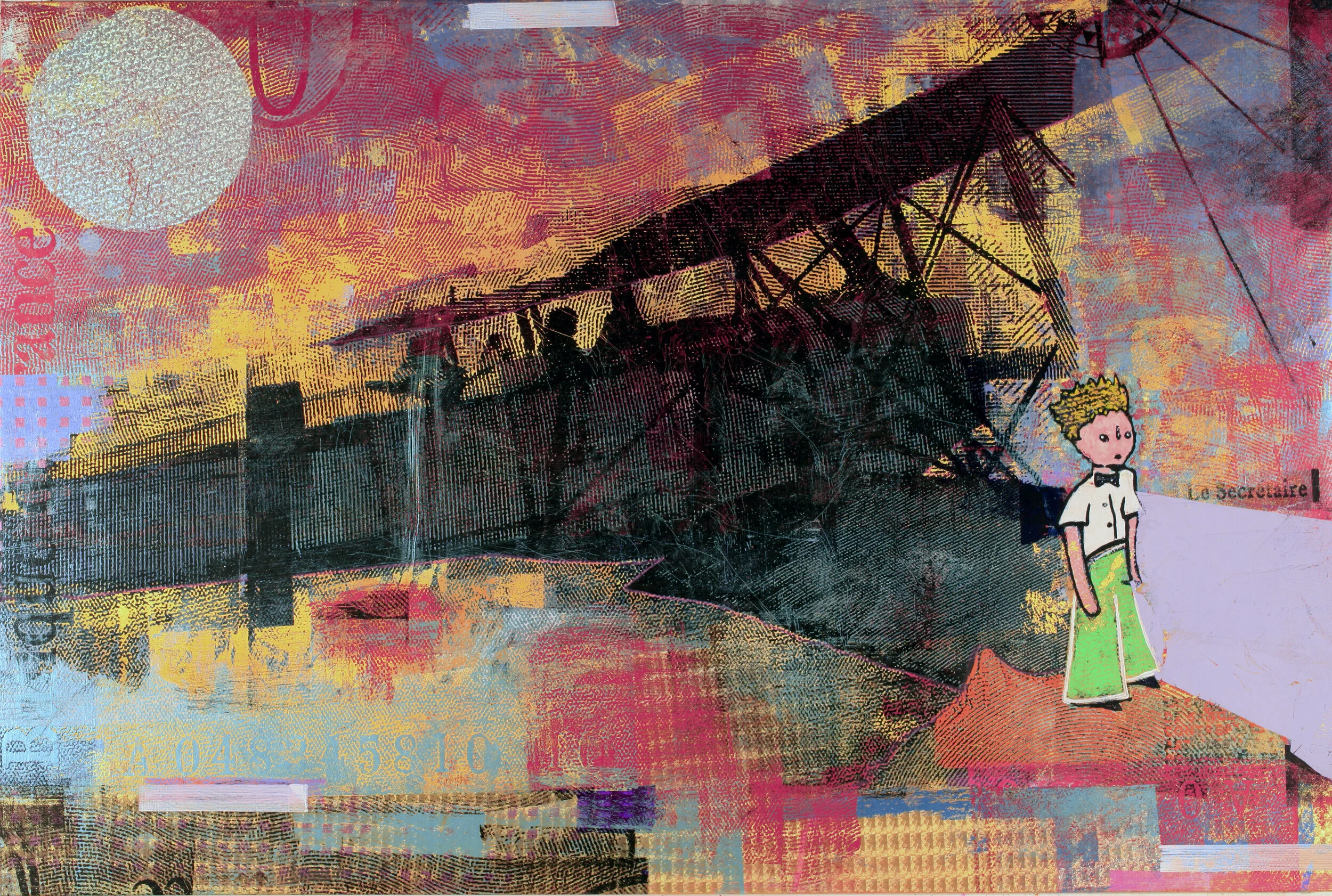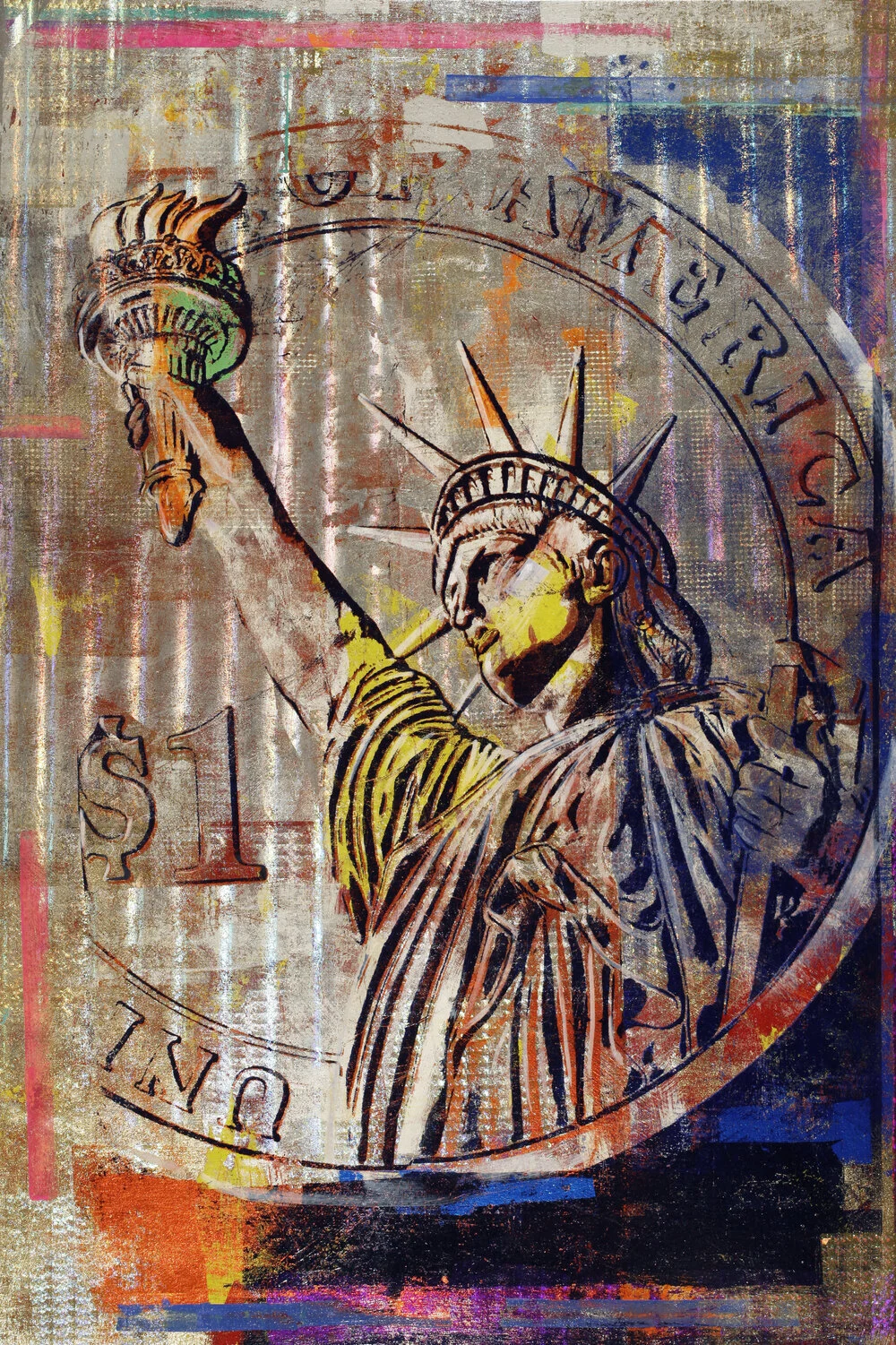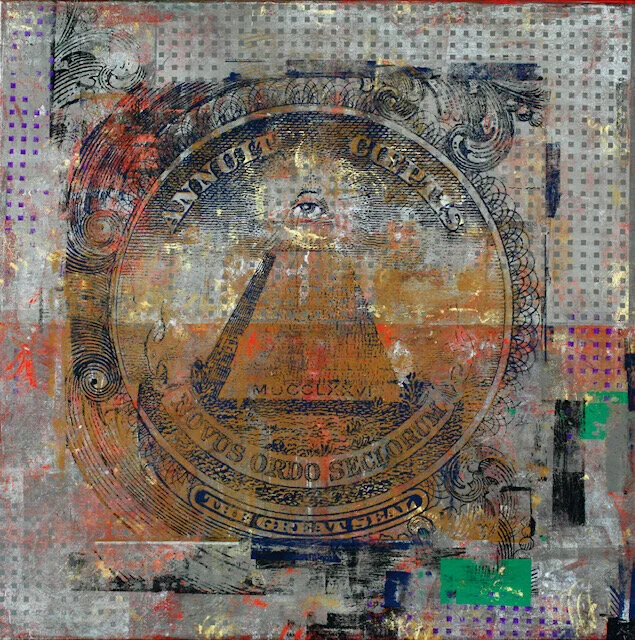Houben Paints Money
Through currencies, repetition-loving artist Houben Tcherkelov enters a dialog with different subjects, different eras, and ideologies.
INTERVIEW WITH THE ARTIST HOUBEN TCHERKELOV
HOUBEN TCHERKELOV
From the artist’s archives
LES COULEURS: Do you have a favorite photograph or painting, which inspires you?
HOUBEN TCHERKELOV: Yes, I have many, but today I can mention “January” 1989 a painting by Gerhard Richter. Anything by Andy Warhol is great.
LC: Do you receive studio visits?
HT: Yes, I was very busy before the Covid pandemic. Currently, I follow the recommended protocol and see very few people.
LC: Can you tell us about the process of making your work?
HT: The process is complicated and involves several stages before the completion of paintings. Initially, I select an image that comes from currency, next is preparing the canvass with acrylic accordingly. The third,- is heat transfer of the image onto the metallic foil. It requires several transfers to have a satisfactory image. Then is pressing the foil onto the canvas and finishing the painting with acrylic paint. This goes back and forth and is not set in stone principle, involves chances and failures.
HOUBEN TCHERKELOV
From the artist’s archives
HOUBEN TCHERKELOV
From the artist’s archives
LC: What themes do you pursue?
HT: In my works, I borrow images from banknotes.
My paintings are a way to enter a dialogue with different subjects, different eras, and ideologies. Through currencies, many cultures manifest clearly and directly. Sometimes this communication is subtle, but often it is overt. As an artist, I translate and distill images on money into an artistic product that will receive its value and ultimately be moved into an exchange in the same way as the currency. Art and money are similar, in that both rely on trust to communicate, since the intrinsic value of a painting as with a printed bill, is just a fraction of its value.
I use repetition of the same subject to highlight this connection further. From the early icon paintings through the Renaissance, to Pop Art and Superhero movies, repetition is very common through art history and highlights principles of desire, consumption, and commerce. The representation of money stands in for this desire; whereas previous generations of Pop Art reflected the desire for material objects, the depiction of images from currency may represent an evolution in consumption from material goods to net worth.
LC: What do you dislike about the art world?
HT: I don’t like its snobbery . . . I dislike also it that is overly political and not fair at all.
HOUBEN TCHERKELOV
From the artist’s archives
LC: What role does the artist have in society?
HT: Artist must be a mediator, communicator of ideas, and arbiter of taste and educator at the same time.
LC: What exhibitions are you working on or have you participated in?
HT: My solo show “All the Money in the World” just closed in InSian Gallery, Taipei, Taiwan but “Why So Serious?” is still running until the end of March 2021 at the Museum of Humour and Satire in Gabrovo, Bulgaria.
LC: Who are your biggest influences?
HT: Andy Warhol, Jeff Koons and Sigmar Polke.
LC: What’s your background?
HT: I was born in Kardzhali, Bulgaria. Started art lessons at the age of 10. At age 14 I was accepted into a magnet school for gifted painters and later, after graduating from the Academy of Fine Arts in Sofia, Bulgaria I moved to New York to pursue a carrier as an artist. Very straightforward, I didn’t have a choice or hesitation.
LC: What does your work aim to say?
HT: Its mission is in the statics - to stop the flying of time, to talk to the past, and to the future. To not turn into ephemera, unlike the built-in interchangeability of almost everything that surrounds us. In 25 years, artificial intelligence will make many professions redundant, but there will be room for traditional human activity that cannot be multiplied or created by robots.
HOUBEN TCHERKELOV
From the artist’s archives
HOUBEN TCHERKELOV
From the artist’s archives
HOUBEN TCHERKELOV
From the artist’s archives
HOUBEN TCHERKELOV
From the artist’s archives
HOUBEN TCHERKELOV
From the artist’s archives










